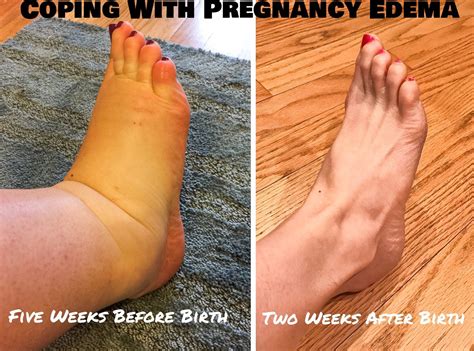Preeclampsia, a condition characterized by high blood pressure and often accompanied by significant amounts of protein in the urine, can pose serious risks to both mother and baby if not promptly recognized and managed. It is a leading cause of maternal and fetal morbidity and mortality worldwide, making early detection critical. The symptoms of preeclampsia can be subtle and sometimes confused with normal pregnancy discomforts, which is why it’s essential for pregnant women and their healthcare providers to be vigilant about monitoring for these signs.
Understanding Preeclampsia
Before diving into the symptoms, it’s crucial to understand what preeclampsia is. The condition typically develops after 20 weeks of gestation and can range from mild to severe. Its exact cause is not well understood, but it involves the placenta and can lead to complications such as premature birth, low birth weight, and in severe cases, eclampsia (seizures), stroke, and other life-threatening conditions for the mother.
Recognizing the Symptoms
Recognizing the symptoms of preeclampsia is key to early diagnosis and intervention. Here are 8 critical symptoms to watch out for:
Severe Headaches: While headaches are common in pregnancy due to hormonal changes and increased blood volume, those associated with preeclampsia are typically more severe and can be described as a migraine or similar to a severe tension headache. If you experience a headache that is severe, persistent, or accompanied by other concerning symptoms, it warrants medical attention.
Vision Changes: This includes blurred vision, double vision, sensitivity to light, or seeing spots or auras. These changes are often due to the high blood pressure affecting the blood vessels in the eyes. If you notice any sudden or unexplained changes in your vision, seek immediate medical care.
Abdominal Pain: Pain in the upper right or middle part of the abdomen can be a symptom of preeclampsia. This pain is often described as severe, sharp, or stabbing, and it may worsen over time.
Nausea and Vomiting: While nausea is common in early pregnancy (morning sickness), preeclampsia can also cause nausea and vomiting, especially in the later stages of pregnancy. This can lead to dehydration and further complicate the condition.
Rapid Weight Gain: Sudden and rapid weight gain, especially if accompanied by swelling, could be indicative of preeclampsia. Swelling (edema) in the face, hands, and feet is common but can also occur in other parts of the body.
Fatigue: Feeling extremely tired, even after resting, can be a symptom of preeclampsia. However, this symptom is nonspecific and can be challenging to differentiate from normal pregnancy fatigue.
Urine Changes: Significant amounts of protein in the urine (proteinuria) can be a sign of preeclampsia. While this symptom is typically detected through urine tests during prenatal visits, if you notice any unusual changes in your urine, such as foam or an unusual odor, it’s essential to discuss these with your healthcare provider.
Shortness of Breath: Difficulty breathing or feeling like you can’t catch your breath can be a sign of severe preeclampsia affecting your lungs and heart.
Managing and Treating Preeclampsia
Management of preeclampsia depends on its severity and the stage of pregnancy. For mild cases, close monitoring of blood pressure and fetal health may be sufficient. However, in more severe cases or if complications arise, hospitalization may be necessary to keep a close eye on both mother and baby. In some instances, immediate delivery may be the safest option for both, regardless of gestational age.
Prevention strategies include regular prenatal care, monitoring blood pressure at home (if recommended by a healthcare provider), and maintaining a healthy diet and lifestyle. While there’s no guaranteed way to prevent preeclampsia, being aware of the risk factors (such as a history of preeclampsia in a previous pregnancy, chronic high blood pressure, kidney disease, and obesity) can help healthcare providers monitor at-risk pregnancies more closely.
Conclusion
Preeclampsia is a serious condition that requires prompt recognition and treatment to prevent adverse outcomes for both mother and baby. By being aware of the potential symptoms and understanding the importance of prenatal care, pregnant women can play an active role in ensuring their health and the health of their baby. If you are experiencing any of the symptoms mentioned or have concerns about preeclampsia, do not hesitate to reach out to your healthcare provider.
What is the primary symptom that distinguishes preeclampsia from normal pregnancy discomforts?
+The primary symptom that often distinguishes preeclampsia is severe and persistent headaches, along with vision changes, which are less common in normal pregnancies.
How is preeclampsia diagnosed?
+Preeclampsia is diagnosed through a combination of blood pressure checks, urine tests for protein, and sometimes additional tests to assess fetal well-being and rule out other conditions.
Can preeclampsia be prevented?
+While there is no guaranteed way to prevent preeclampsia, maintaining a healthy lifestyle, managing chronic conditions like hypertension, attending regular prenatal care visits, and being aware of risk factors can help in early detection and management.
What are the potential complications of preeclampsia for the baby?
+Potential complications for the baby include premature birth, low birth weight, and potential issues related to placental insufficiency, such as growth restriction.
How can I ensure I receive the best care for preeclampsia?
+Ensuring you attend all recommended prenatal appointments, following your healthcare provider’s advice, and being proactive in reporting any concerning symptoms can help in receiving the best care for preeclampsia.
Is preeclampsia more common in first pregnancies?
+Preeclampsia is more common in first pregnancies, but it can occur in any pregnancy. Women who have had preeclampsia in a previous pregnancy are also at a higher risk of developing it again.



